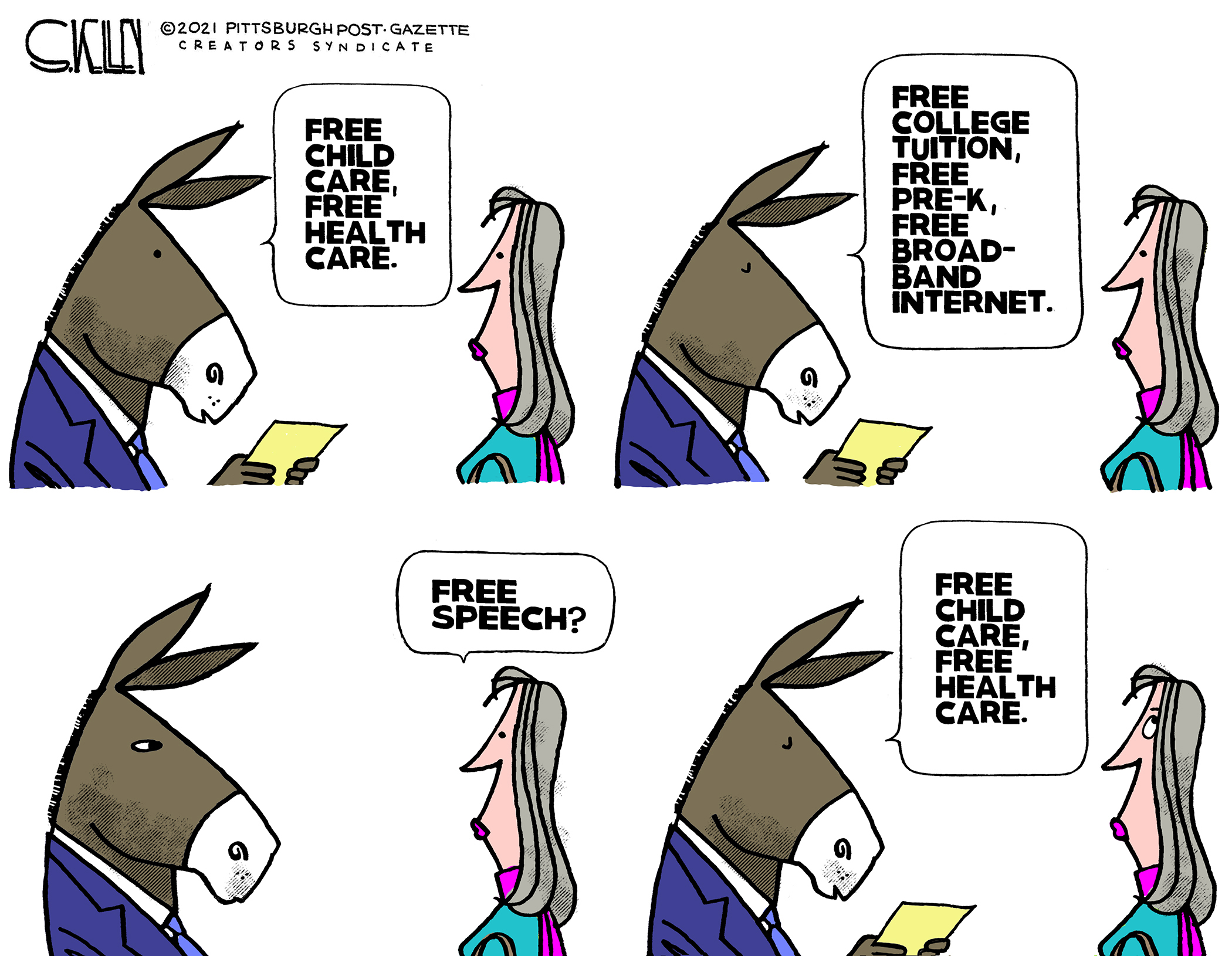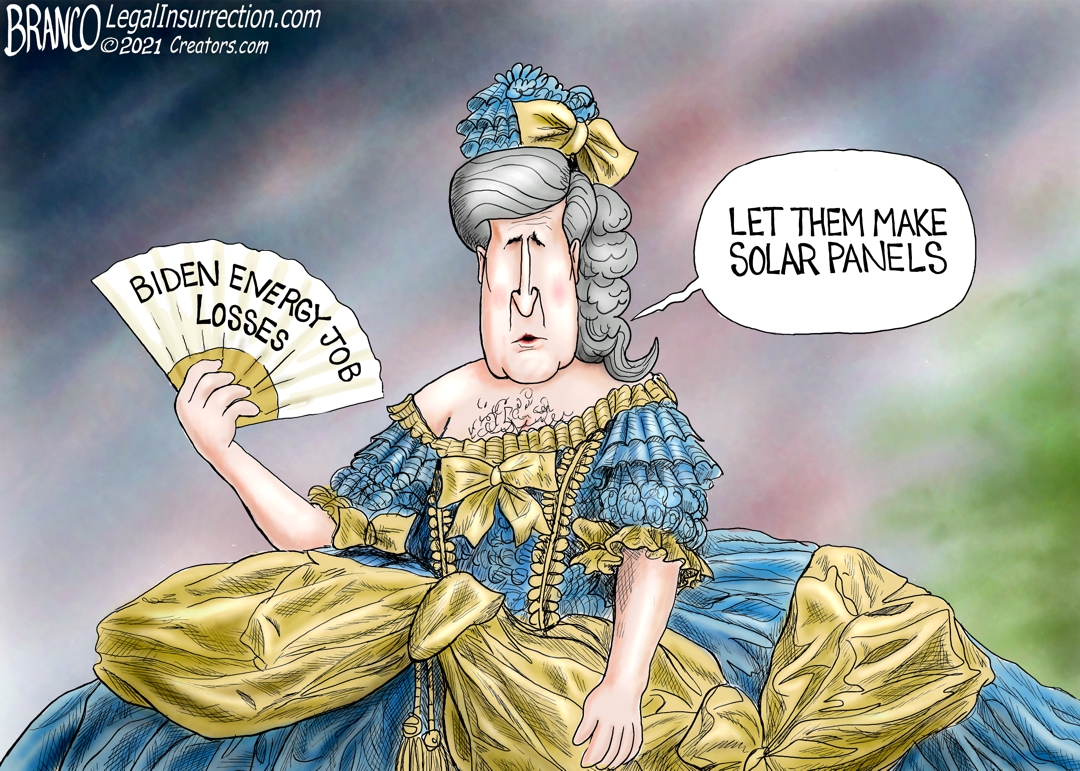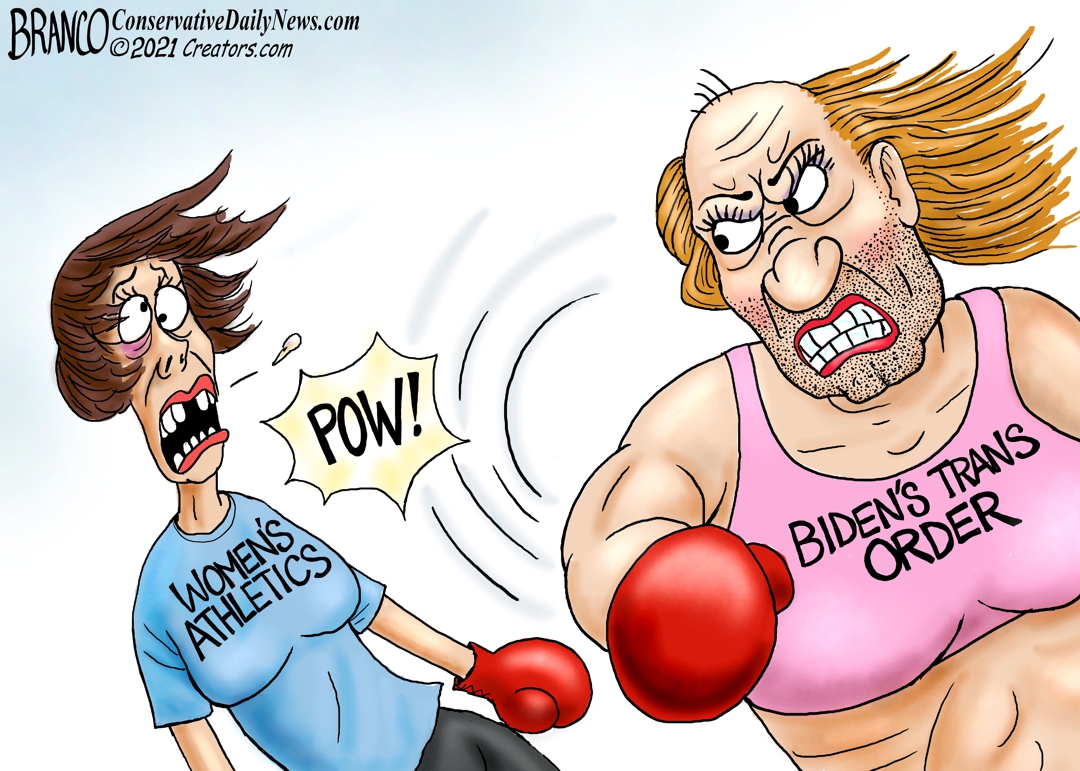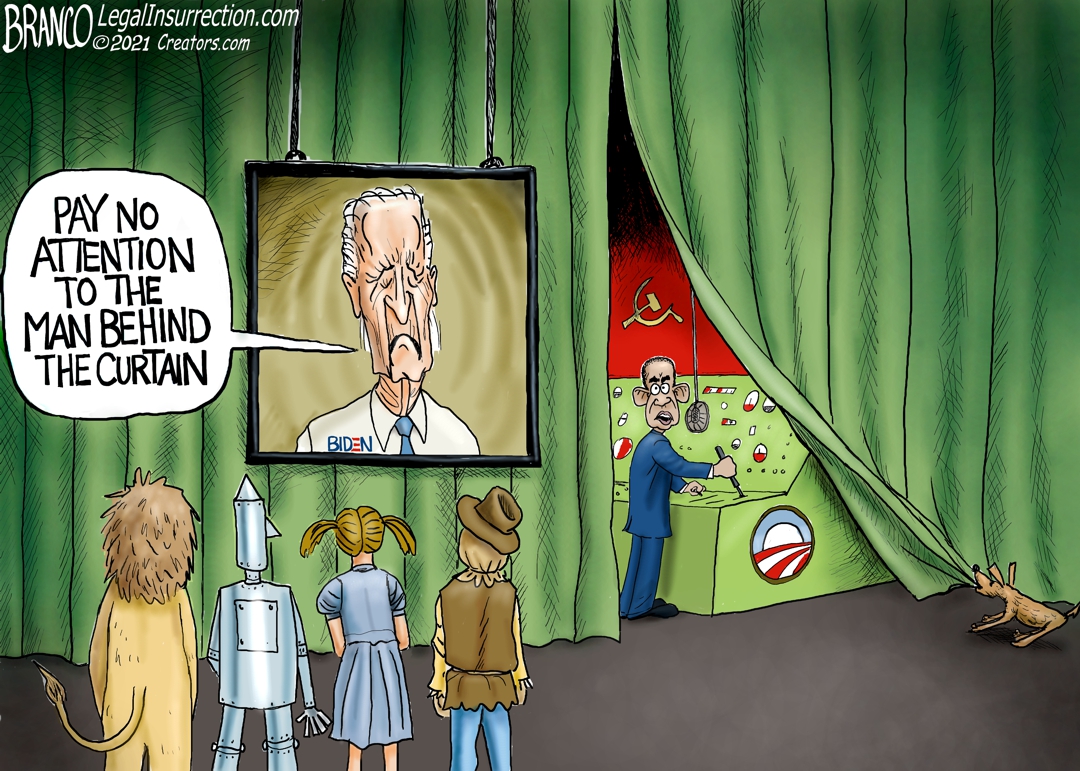San Francisco has issued its latest grand moral decree, and bad ex-presidents would be quaking in their coffins—if they could stop laughing.
On January 26, the San Francisco school board announced that dozens of public schools must be renamed. The figures that do not meet the board’s standards include Abraham Lincoln, George Washington, Thomas Jefferson, Theodore Roosevelt, John Muir, Robert Louis Stevenson, Paul Revere, and Dianne Feinstein. A panel had determined that the 44 schools—more than one-third of the city’s total—were named after figures guilty of being, variously, colonizers; slave owners; exploiters of workers; oppressors of women, children, or queer and transgender people; people connected to human rights or environmental abuses; and espousers of racist beliefs.
This holier-than-thou crusade is typical for San Francisco, which in recent years has traded in its Freak Flag to march under the banner of brain-dead political correctness. Aside from providing invaluable ammunition to Fox News, Rush Limbaugh, and the more than 70 million Trump supporters whose most extreme caricatures of liberals have now been confirmed, renaming the schools is likely to cost the already deeply indebted district millions of dollars, and will not help a single disadvantaged student or actually advance the cause of racial justice. The nation’s reckoning about its racist past might have positive aspects, but exercises in Maoist “constructive self-criticism” are not among them.
The School Names Advisory Committee was created in 2018 by the San Francisco Board of Education. Although the committee of community members and school-board staff was supposed to “engage the larger San Francisco community in a sustained discussion regarding public school names,” no such engagement ever took place. The “blue-ribbon panel” did its own “research” (using that term lightly) and issued its own rulings. In keeping with the incorruptible, Robespierre-like spirit of our revolutionary times, the committee decreed that one sin (being a colonizer or slave owner, using an “inappropriate” word, and so on) was all that was required to send a figure to the guillotine. Once that decision was made, the severed heads rolled into the gutter of history. Since Washington was a slave owner and, in the words of the committee, “the majority of [Lincoln’s] policies proved detrimental” to native peoples, the leader who won America’s war of independence and the one who saved the union and issued the Emancipation Proclamation were dispatched without further discussion. The decision to rename Abraham Lincoln High took five seconds; George Washington took 12.
The decision process was a joke. The committee’s research seems to have consisted mostly of cursory Google searches, and the sources cited were primarily Wikipedia entries or similar. Historians were not consulted. Embarrassing errors of interpretation were made, as well as rudimentary factual errors. Robert Louis Stevenson, perhaps the most beloved literary figure in the city’s history, was canceled because in a poem titled “Foreign Children” in his famous collection A Child’s Garden of Verses, he used the rhyming word Japanee for Japanese. Paul Revere Elementary School ended up on the renaming list because during the discussion a committee member misread a History.com article as claiming that Revere had taken part in an expedition that stole the lands of the Penobscot Indians. In fact, the article described Revere’s role in the Penobscot Expedition, a disastrous American military campaign against the British during the Revolutionary War. (That expedition was named after a bay in Maine.) But no one bothered to check, the committee voted to rename the school, and by order of the San Francisco school board Paul Revere will now ride into oblivion.
The committee also failed to consistently apply its one-strike-and-you’re-out rule. When one member questioned whether Malcolm X Academy should be renamed in light of the fact that Malcolm was once a pimp, and therefore subjugated women, the committee decided that his later career redeemed his earlier missteps. Yet no such exceptions were made for Lincoln, Jefferson, and others on the list.
In its rush to sweep historical evildoers off the stage, the committee erased much of San Francisco and California’s Hispanic heritage. Not just Father Junípero Serra, the spiritual head of Spain’s colonizing expedition, but also José Ortega, who as a member of the Portolá expedition discovered San Francisco Bay, and other other Spanish- and Mexican-era figures, had their names removed from schools because they engaged in or were associated with actions that harmed Native Americans. No one disputes that every colonizing group in California, from the Spanish to the Mexicans to the Americans (who engaged in actual genocide), had a dreadful record with native peoples. But for all of its supposed ethnic sensitivity, the committee seems not to have been concerned about removing Latin figures.
Mythical entities also fell under the fatal gaze of the Purity Police. El Dorado Elementary, named after a fantastical kingdom whose fame circulated among Spanish explorers in the early 16th century and whose Goldfinger-like ruler was allegedly ceremonially covered by his subjects with gold dust, also made the list. Citing the death of native peoples that resulted from the Gold Rush, the San Francisco Chronicle reported that a committee member said, “I don’t think the concept of greed and lust for gold is a concept we want our children to be given”—an idealistic, if possibly futile, position in a city whose median income exceeds $100,000.
The possibility that judging past figures by the standards of the present is both untenable and ethically suspect did not, apparently, occur to the committee. Nor did the committee decide that the towering achievements of Lincoln or Washington or Jefferson might just outweigh their shortcomings. It defended its crusade as part of America’s racial reckoning. As the committee chair, the first-grade teacher Jeremiah Jeffries, said, “This is important work. We’re in the middle of a reckoning as a country and a nation. We need to do our part.”
The board’s vote drew the ire of Mayor London Breed, who blasted the committee for wasting resources on such an exercise instead of trying to reopen the public schools. “Let’s bring the same urgency and focus on getting our kids back in the classroom, and then we can have that longer conversation about the future of school names,” she tweeted.
To her credit, Breed suggested that the conversation be opened up to all the stakeholders in the city, including students. But she did not challenge the renaming campaign itself, only its timing and process. In fact, Breed and other city officials, and much of the city’s cultural intelligentsia, are partly to blame for this embarrassing episode. Promoting easy symbolic solutions to intractable societal problems, they have either endorsed earlier cultural-purification missions or said nothing about them at all. As a result, they have made it impossible to make any foundational arguments against those acts, and have created the slippery slope the city finds itself sliding down.
This debacle is just the latest example of “progressive” cultural censorship in a city once renowned as a bastion of free speech. Our purgative program began in 2018, when an 1894 statue titled Early Days was removed from a cluster of statues near city hall called the Pioneer Monument, at the behest of the city’s Indigenous activists. The piece, or at least most of it, was undeniably retrograde: It showed a Spanish priest looming above a cowering, seated Native American, with a debonair vaquero striking a proud pose nearby. The city’s art establishment remained silent as the statue was hauled away: The bloody 2017 riot in Charlottesville, Virginia, over the removal of a statue of Robert E. Lee made it anathema on the left to question the destruction of monuments deemed objectionable by groups deemed to have standing. But the fact that Early Days was taken down without much opposition meant that the beliefs underlying the decision to remove such monuments, the issue of who gets to determine their fate, the implications of removing them, and the possible alternatives to removal, were never seriously discussed. As the renaming debacle demonstrates, such a discussion is urgently needed.
Those who demand the removal of art like Early Days, or insist that schools named after objectionable figures must be renamed, are acting on the assumption either that the continued presence of these works and names in the public sphere constitutes an official endorsement of a racist, colonialist, or otherwise objectionable message, or that the messages they send are so hurtful that they must be erased. Both assumptions are weak.
Suppose a 400-year-old statue in a town square depicts something that has not been societally acceptable for centuries. Should that statue be removed? Is there any real point in publicly renouncing the ideology prevalent during, say, the era of the Salem witch trials? If 400 years of disapproval make renunciation and removal pointless, what about 300 years, or 200, or 100? More broadly, if a society roundly condemns the message of a statue, does it matter that the message is sent? Does anyone really believe that the presence of a statue constitutes an official endorsement of its ideological meaning? And if it doesn’t, why is the statue hurtful? Can people really be hurt by a message sent by a historic statue, arriving like ancient light from a star in a distant galaxy? And if they are, should their feelings take precedence over all others’? Who has standing in this debate? At what point is a monument’s historical value, as a record of the beliefs and sometimes bigotries of its time, more important than the hurtful message it allegedly sends?
The left, or at least the woke left, largely dismisses such questions. It has embraced a kind of maximum-semiotic approach to cultural artifacts, in which historical context and intent are irrelevant and all that matters is the free-floating message sent by a cultural object. This anything-can-be-offensive stance is combined with an identity-politics-driven, victim-centered ideology that makes people of color and historically oppressed groups the arbiters of whether a cultural object stays or goes. (Hey, it’s so much easier than actually working to improve their lot.) And their rulings cannot be appealed.
The don’t-know-whether-to-laugh-or-cry consequences of such an approach were displayed in 2019, when the San Francisco school board decided to paint over two WPA-era Victor Arnautoff murals at Washington High School on the grounds that they were racially insensitive. The first of the two frescoes, part of a 13-mural composition titled The Life of Washington, depicted Black enslaved people at Mount Vernon; the second showed white settlers stepping over a dead Native American on their way west. The board decided to destroy the murals because a few students and parents complained that the images were hurtful. But Arnautoff intended those images to tell the unvarnished truth about Washington and his age. Arnautoff, a communist, wanted to show that the revered Father of Our Country was a slave owner, and that the westward expansion of the United States was achieved by slaughtering its first inhabitants. The insistence that the images be destroyed (this demand was later downgraded to painted over) was tantamount to declaring that any work of art that depicts a subject that might hurt someone’s feelings, even if the artist had the most subversive and radical intention, can legitimately be censored. (Notably, the two most notorious previous cases of attempted censorship of public art in San Francisco, the Coit Tower and Rincon Annex murals, also involved left-wing WPA-era artists, but those efforts were carried out by conservatives. San Francisco’s left is now doing the censoring.)
The school board’s decision to cover the murals, like the school-renaming fiasco, was met with international derision. But the board has not backed down, and the fate of the murals remains unresolved.
These are not academic issues. The way they are resolved affects daily life in San Francisco—and other places where activists are bluntly, and all too often crudely, rethinking how the past is represented. As a student of both the Spanish and Mexican eras and the horrors visited upon the state’s native peoples, I always looked closely at Early Days as I walked past it, and I found it an oddly fascinating work. It reflected the backward beliefs of its time—which in itself made it a worthy object of study—but it also struck me that it was far from purely celebratory. White Americans of the late 19th century had a highly ambivalent attitude toward the Spanish padres and their fanatical religious zeal, and while their views of native peoples were generally unenlightened, they were more complex than is sometimes imagined. Those ambiguities were part of Early Days. Wasn’t there something a little sinister about the Spanish priest? Now, the statue is simply gone, and the empty space in the Pioneer Monument, intended to be a testament to racial enlightenment, feels instead like an ugly tear in the complex tapestry that makes up the city.
Like Early Days, Christopher Columbus, too, has now been torn out. For decades, as I walked around Coit Tower on San Francisco’s Telegraph Hill, I would go past a huge bronze statue of Columbus. The 12-foot, two-ton statue was commissioned by the city’s Italian American community, many of whom lived in nearby North Beach, and installed in 1957. I was, of course, well aware of Columbus’s grave shortcomings, and the fact that the European colonization of the Americas, like all colonizations throughout world history, resulted in mass slaughter and the destruction of native cultures. But those facts did not prevent me from regarding the statue as an old and familiar acquaintance, which added its own aesthetic and historical grace note to my walks.
So I was shocked last June when during one of my walks I looked up to find that the statue of Columbus was gone. It turned out that during the protests that followed the killing of George Floyd, the statue had been vandalized, and activists announced that they were going to take it down and throw it in the bay. The city abruptly removed it—but not as a tactical retreat. An arts- commission official said the statue was taken down because “it doesn’t align with San Francisco’s values or our commitment to racial justice.”
Soon after the city hastily dumped Columbus in the trash can of history, Juneteenth protesters in Golden Gate Park toppled an 1884 statue of Francis Scott Key, the first statue of the author of “The Star-Spangled Banner” in the country. As police stood by, the protesters also felled a bust of Ulysses S. Grant and a statue of Father Junípero Serra. Key was a slave owner, as, briefly, was Grant; Serra was the spiritual head of Spain’s “Sacred Expedition” that colonized California.
The issue of what to do with monuments and school names can be more complex than the cartoonish excesses of the woke left might indicate. Art’s impact on the public weal should not be the sole or leading measure of its worth—that was Stalinist “socialist realism” lies—but in certain cases it cannot be ignored.
Few would want a statue of Hitler or Mussolini or Tojo to stand in a town square, even if it was erected in the 1930s and thus could be said to be a historical artifact. Many of the Confederate statues in the South were commissioned in the dark days after the end of Reconstruction, when the Ku Klux Klan ran riot, Black people were terrorized and lynched, and the mythology of the “Lost Cause” was born. To treat such objects as if they were simply neutral cultural artifacts is to willfully misread history. Some public art is arguably so detrimental to social cohesion that a civic conversation about what to do with it is desirable.
In any case, the answer does not have to be to remove the “bad” public artworks. They can be curated, with explanatory material placing them in historical context. (Early Days was curated, but inadequately.) They can be balanced with other works: A German friend told me that in Hamburg, city officials dealt with a Nazi-built memorial glorifying war by commissioning a counter-memorial that criticized it. These works can be moved to a historic monument site, or to a museum—making explicit their status as aesthetic or historical objects, not exemplars of city values.
Finally, as Breed suggested, the fate of a city’s cultural heritage should not be decided either by a handful of community members or by bureaucrats. In my opinion, none of the monuments or artworks that were removed should have been, and few, if any, of the schools should have been renamed. But the opinion of any one individual should not carry more weight than anyone else’s. The mostly aesthetic and historical response to public monuments of people like me should not be dispositive, but neither should the ethical and political responses of those who say they are offended. These are civic questions, which should be determined by robust and open public debate.
In the end, self-righteous symbolic crusades like the school-renaming campaign must not be immune from criticism simply because they purport to fight racial injustice—that noble cause is debased by empty gestures that achieve nothing. Indeed, by creating conflict over trivial objectives—just turn on Fox News—they are more likely to harm the cause of societal progress and racial harmony than to advance it.






